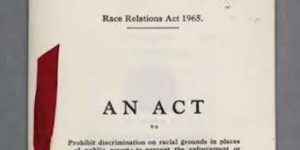
*On this date in 1965, the Race Relations Act was enacted. This was the first legislation in the United Kingdom to address racial discrimination.
The Act outlawed discrimination on the "grounds of color, race, or ethnic or national origins" in public places in Great Britain. It also prompted the creation of the Race Relations Board in 1966. The board would consist of a chairman and two other members appointed by the Secretary of State. Its remit was to consider complaints under the Act.
The Windrush generation in the UK was part of an influx of economic migrants after World War II, many from ex-British colonies. By the time the 1965 bill came, there was a population of almost a million immigrants living in Britain. The Museum of London states that "casual color prejudice' was part of daily life" for many. The left-wing Member of Parliament, Fenner Brockway, introduced a bill to stop racial discrimination eight times from 1956 to 1964.
1958, London saw the Notting Hill riots, and in 1963, the Bristol Bus Boycott occurred. The Act specifically excluded shops and private boarding houses, only outlawing discrimination in "places of public resort." The Race Relations Board was rather weak in its enforcement capabilities, limited to conciliation and an assurance not to return to discriminatory behavior. It was "a weak piece of legislation" and failed to end racial discrimination in the UK entirely.
The act did not apply in Northern Ireland. It was strengthened by the Race Relations Act 1968, which extended the legislation's remit to cover employment and housing. It was repealed by the Race Relations Act 1976, which created the Commission for Racial Equality.